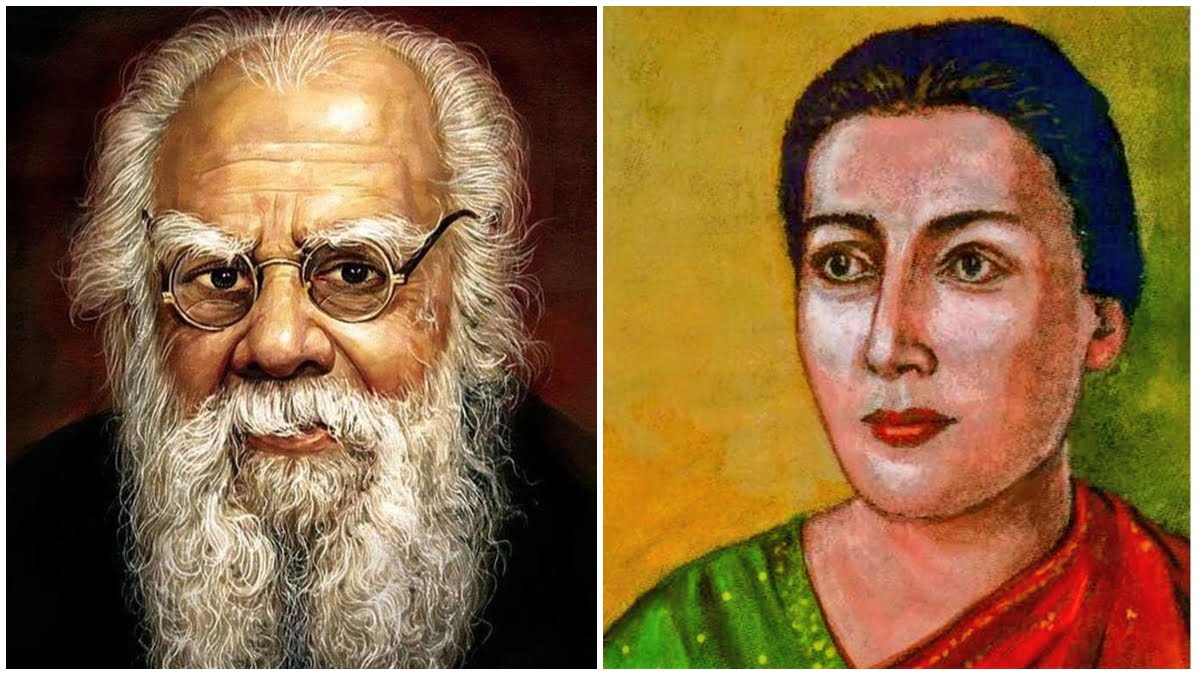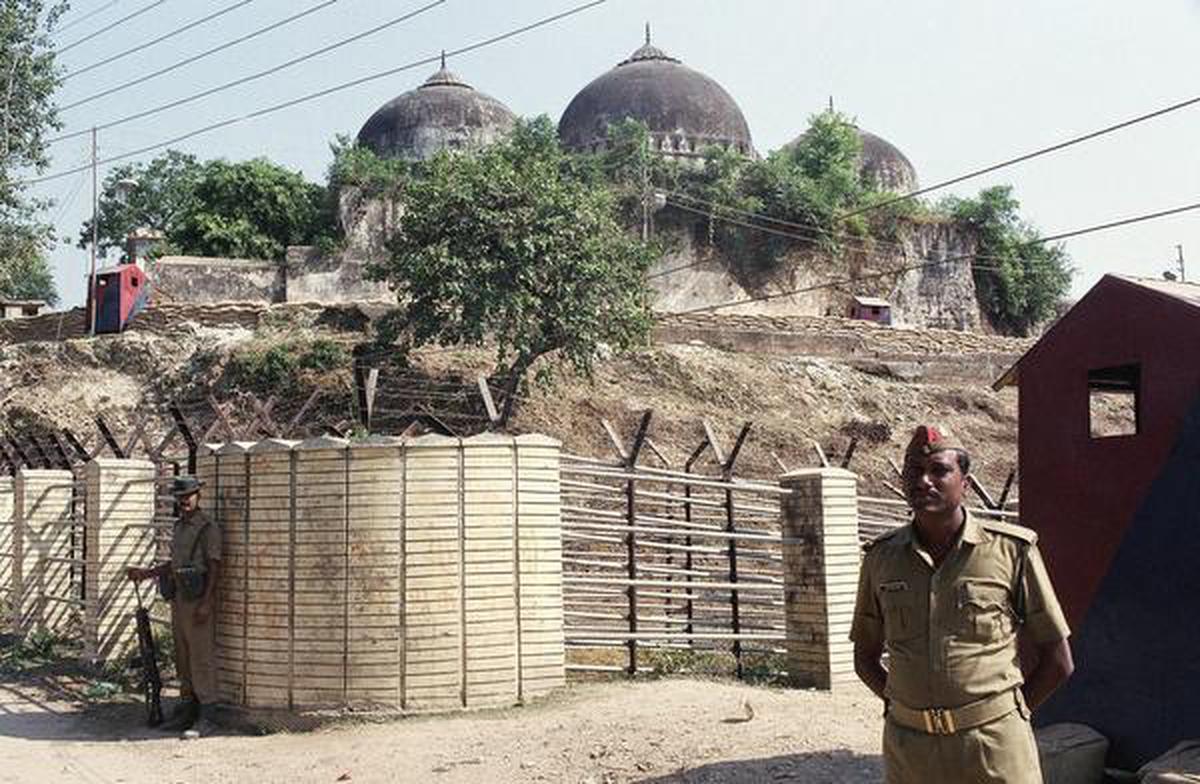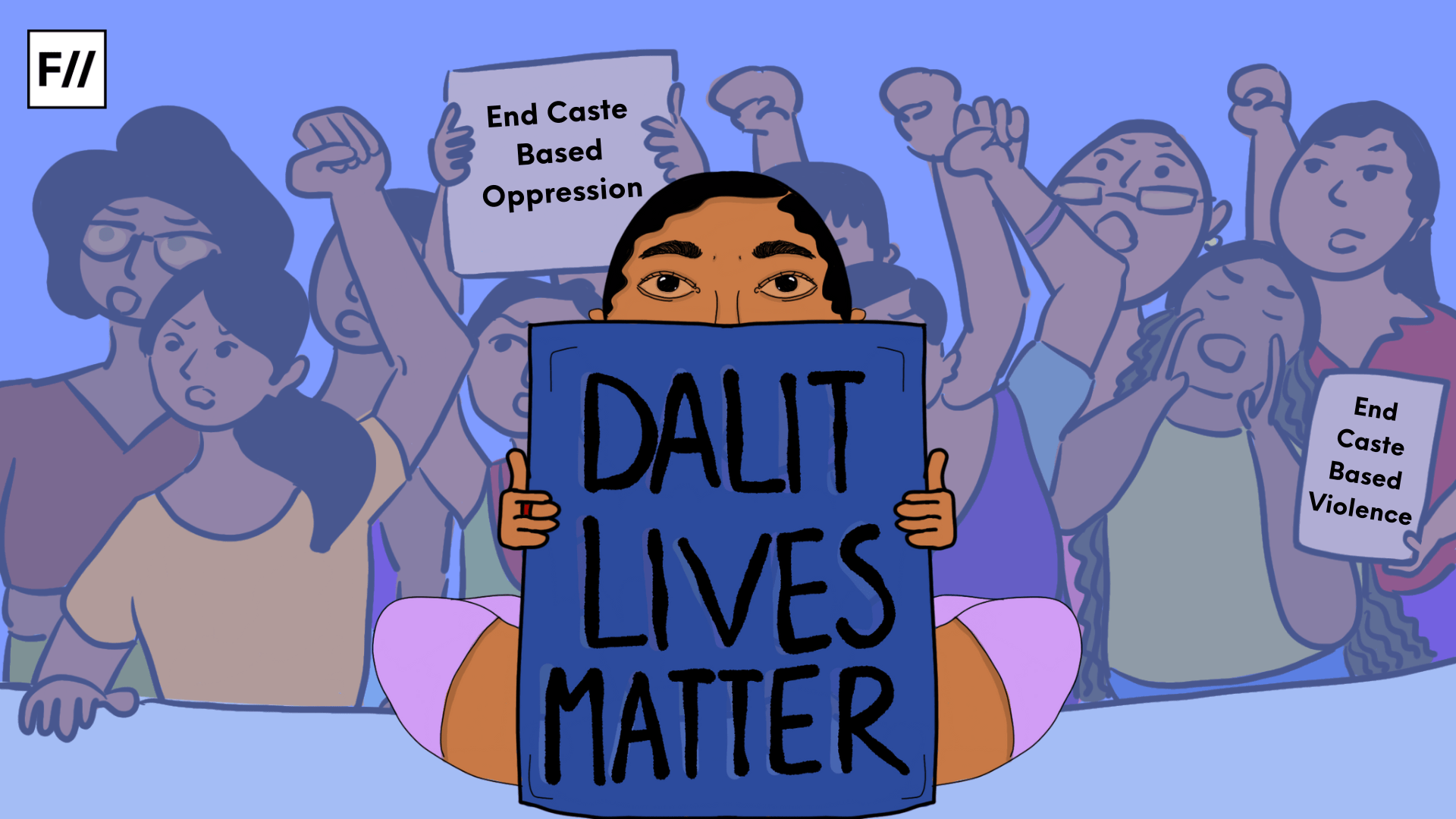This article examines and draws parallels between E.V. Ramaswami, popularly known as Periyar (the great one) and subaltern feminist Tarabai Shinde, with regards to their radical thought and works on religion in general and Brahmanism in particular. While Periyar saw Hinduism as a fundamental degradation of non-brahmin community and inverted Ramayana to consider asura Ravana as Dravida hero, Tarabai interprets Brahmanism as an instrument of women oppression. As the article unfolds, it will give an insightful touch as to why we need such emancipatory thinkers in increasingly daunting times of religious evil, intolerance and symbolic violence.
Introduction
E.V. Ramaswami’s statue in Tiruchirapalli has his message inscribed (in Tamil), which reads: “God does not exist at all. The inventor of God is a fool. The propagator of God is a scoundrel. The worshipper of God is a barbarian”.(Guha,2010: 242-261)
Tarabai Shinde attacks the bramacharis, sadhus, jogis, jatadharis with this description: “outside they parade in saffron robes, inside the ulcer of evil thoughts.”
This article will enlighten on how these momentous figures condemned discriminatory principles which worked together to keep the silenced masses as “children of prostitutes” and also they accused religion in general for gender biased moral prescriptions.
Also read: Periyar E V Ramasamy: A True Leader Of The Marginalised
While Periyar saw Hinduism as a fundamental degradation of non-brahmin community and inverted Ramayana to consider asura Ravana as Dravida hero, Tarabai interprets Brahmanism as an instrument of women oppression.
Periyar Debarring Religion As Corrupt And Fraud
Periyar stated, “What is the purpose of the existence of religion for a country or a society or an individual? Is it meant for disciplining and uniting a society or to divide it? Is it bound by the conscience of an individual or is it meant to bind’s individual conscience? Is religion for the sake of man or is it man for the sake of religion?”

He questioned the nature of religion in general and Hinduism in specific by asking who understands the philosophy of Hinduism, if we concede there is a Hindu doctrine, what does Hindu mean? Who is the author of this religion? If Hindu religion is the religion of the Vedas then why circumscribed in a boundary, why has it been revealed only in one language.
Periyar’s critique of religion, particularly the Hindu religion has many aspects to it:
Firstly, he held that it justified birth-based social divisions, and legitimized the caste order.
Secondly, he noted that the Hindu religion refused learning to all but Brahmins. Others might learn a craft, or be proficient in their trade but they were not to be “educated” – that is, they were not permitted to ask questions to do with god or religious practices.
Thirdly, the Hindu faith valorised the role of the Brahmin, not only in his capacity as priest, but also in whatever secular role he sought for himself – for instance, it upheld the claims of Brahmins when they proclaimed themselves the “natural” intellectual leaders of society .
The relationship between the Hindu religion and caste was evident to Periyar. Hindu religion was nothing but an expression of the unequal castes within the system. For Periyar, the religion-caste linkage existed at many levels: in the realm of knowledge and learning; in the arena of labour and occupations; and in the play of social as well as intimate relationships.
Periyar upheld the claims of reason. All human beings, he argued, were capable of rational thought, and possessed the discretion to weigh evidence, arguments and come to their own decisions and understanding of all matters, whether social or spiritual or political. Periyar entreated his followers to not accept his point of view, without rigorously examining his arguments. He often pointed to how in subsequent decades, his ideas might appear quaint and considered even worthless.
Periyar saw in the Buddha an inspiration for the rationalism and atheism. Periyar argued that Buddhism was founded on the belief of no god, no soul, and no belief in the permanency of anything, and since it was based on investigation and reason, it could not be called a religion in the conventional sense. He called Buddhism “an atom bomb to Aryanism”. Inspired by the thoughts of Dalit leaders like Narasu, Thass and Ambedkar, Periyar not only saw in Buddhism an emancipatory option for the Dalits and the lower castes, but also a scientific, rationalist approach to life as such. (Aloysius,2005:3-10)
In a speech in 1972, a year before his demise, Periyar reiterated his admiration for Ambedkar’s contributions to the welfare of the oppressed castes, urging his followers that it was not enough to praise Ambedkar, but one must also follow his ideology. He defended Ambedkar as someone “who did not compromise on his ideas in face of opposition” and took issue with Gandhi for naming the untouchable castes as ‘Harijans’ (children of Hari, another name for the Hindu god Vishnu)—To Periyar, gods like Vishnu and Shiva were the reason for the oppression of the untouchable castes and hence, they should not be named after such deities. In this speech, Periyar called for the oppressed castes to be politically united:
You should not have belief in god or religion. You must realise that the Hindu god and religion are responsible for your degraded position. You must primarily trust your reason. Your reason will help your emancipation, not god or religion. (Ramasamy, 2006: 42-43).
Also read: Tarabai Shinde: Breaking Caste & Patriarchy Glass Ceilings | #IndianWomenInHistory
Tarabai Shinde Debarring Religion As An Instrument Devised By Men To Oppress Women
The feminist activist and member of ‘Satyashodhak Samaj’ (“Truth Finding Community”) Tarabai Shinde was a rebel against patriarchy and caste system in 19th century India. In her debut and controversial book, Stree Purush Tulana (A Comparison of Men and Women) she criticises the system of oppression in Hindu culture.
In Indian society, women are not only treated as subordinate to men but are also subject to discrimination, humiliation, exploitation, oppression, control and violence. She defined feminine image and raised questions about the standard set by patriarchy for women, which were unfair, and the cause of their secondary and marginal position in society.
In the essay ‘A Comparison of Men and Women’, Tarabai Shinde, writing in fury over the sentencing to death of a young widow for the murder of her infant, in 1882, it strikes one of the earliest notes of revolt, a defining moment in the paradigm of feminist insurgency. Tarabai is the first Indian feminist to minutely point out male hypocrisy and women’s secondary status in Indian society. Her essay was written in response to the article published in ‘Pune Vaibhav’ on the immorality of widows.
Tarabai, with her own sets of arguments, conclusively drew seven points in “A Comparison of Men and Women” by defying prejudices as mainly being:
a) man stronger than woman when it comes to intellect.
b) true women are whirled about many whims.
c) women abode of debauchery.
d) women are very city of thoughtfulness.
e) women are storehouse of guilt.
f) women soaked in deceit?
g) women are the beginning of all wickedness.
Puranas and manusmruti restricted and controlled women’s life through orthodox norms and conventions like a woman must always maintain her virtue and surrender her body to her husband only. Tarabai shows male hypocrisy and diplomacy, if women follow patriarchal conventions she was labelled as ‘goddesses’ and if not, then as ‘whore’. There is no place for women as a human being in Indian society. Either she is worshiped or cursed in society.
Even today, Indian woman don’t dare to write in the language that Tarabai wrote in the nineteenth century. In the introduction of her essay, she clarifies her purpose of writing: “God brought this amazing universe into being, and he also who created men and women both. So, is it true that only women’s bodies are home to all kinds of wicked vices? Or have men got just the same faults as we find in women?
She said, “Granted women are as stupid as buffaloes in the cow pen! They are ignorant and do not grant them even an iota of intelligence.”
Throughout her essay, Tarabai Shinde argued for women’s equal share with men. She refused to accept the superiority of men in gender relation. She said, “What’s good for a man ought to be good for woman as well”. Tarabai Shinde found the privileges enjoyed by men to be the cause of the degradation of women.
In 19th century, men and women called for emancipation and labelled it as ‘women’s uplift’ but what Shinde called for, however, was altogether different and more radical–namely, equality or parity between men and women.
A Comparative Analysis of Periyar and Tarabai on Defying the Hindu God:
Periyar was named after the hindu god Rama by his father. Little did he know that Ramasamy would later earn the reputation for being the most trenchant, relentless critic and declared enemy of god he was named after and for pledging his loyalty to the cause of Ravana.
To Periyar, Rama represented an invading Aryan force that stood for Brahminism and the subjugation of the lower castes, while Ravana was a Dravidian native who resisted this invasion. Periyar strategically appropriates Ravana to counterpose a Dravidian icon against what he saw as an Aryan icon, which he associated with the unjust exercise of high-caste social and political power. Ravana, the noble asura, to Periyar was a useful accessory from mythological sources to counter the hegemonic claims of the Hindu god.
Periyar vocally challenged the projection of Ramraj as an ideal state. Paula Richman argues that to Periyar “Ramraj was a pernicious brahminic fiction designed to keep nonbrahmins from challenging the status quo”. One could ask why Periyar should engage with Ramayana and its concepts in such depth if he did not believe in it. Periyar argued that the Ramayana–both Valmiki’s Sanskrit version and Kamban’s Tamil version–continued to have moral and social influence among the Tamils of his time, and, hence, it was a task of the rationalists to expose the true nature of these texts. In Periyar’s view, Ramraj represented a Hindu dystopia that contributed to the benefit of the few at the expense of the many.
On the contrary, for Tarabai it was important to defy Hindu gods for the emancipation of women. She has explained at length how the saints were lustful predators always in search of pretty women. She provided feminist interpretation to Hindu epics, mainly Ramayana, by quoting that gods themselves bring destruction on women.
Its all women fault again. Sita even took the fire orderal but people still went blaming her. (Guha,2019:138)
This explains how both Periyar and Shinde, who had similar proclamations, still had a different agenda to pursue it. As Periyar defied Hindu gods on the claim that they were the harbingers to the oppression of the lower caste and the Hindu epics mainly consisted of a chasm between the Aryans and Dravidians. Tarabai defied Hindu gods on the account that it deprived women equal access and freedom to live dignified life.

Periyar and Tarabai staunchly supported the cause that religion is for man and not man for religion, which is crucial for all of us to understand during the recent daunting times of radicalism inherent in all religions which is giving rise to symbolic violence.
Relevance of Such Thinkers In Today’s Troubling Times
To see Periyar and Tarabai Shinde just as leaders would be a grave mistake as their message was universal and relevant to India. They staunchly supported the cause that religion is for man and not man for religion, which is crucial for all of us to understand during the recent daunting times of radicalism inherent in all religions which is giving rise to symbolic violence.
Hereby, I conclude by quoting “no two leaves are alike and yet there is no antagonism between them or between the branches on which they grow”. Thus whenever in dilemma let us revisit such progressive reformers who were far sighted in vision, restored equity and parity, questioned unjust and dubious claims and inspired us to live with equality, liberty, fraternity and most importantly with dignity.
References:
1) Tarabai Shinde : ‘A Comparison of Men and Women’
2) Ramchandra Guha : ‘Makers of Modern India’
3) Gail Omvedt : ‘ Understanding Caste’
Diksha Spolia is currently pursuing MA Political Science, Delhi University. She has interest in and pays close attention to women’s studies. She can be found on Instagram.




